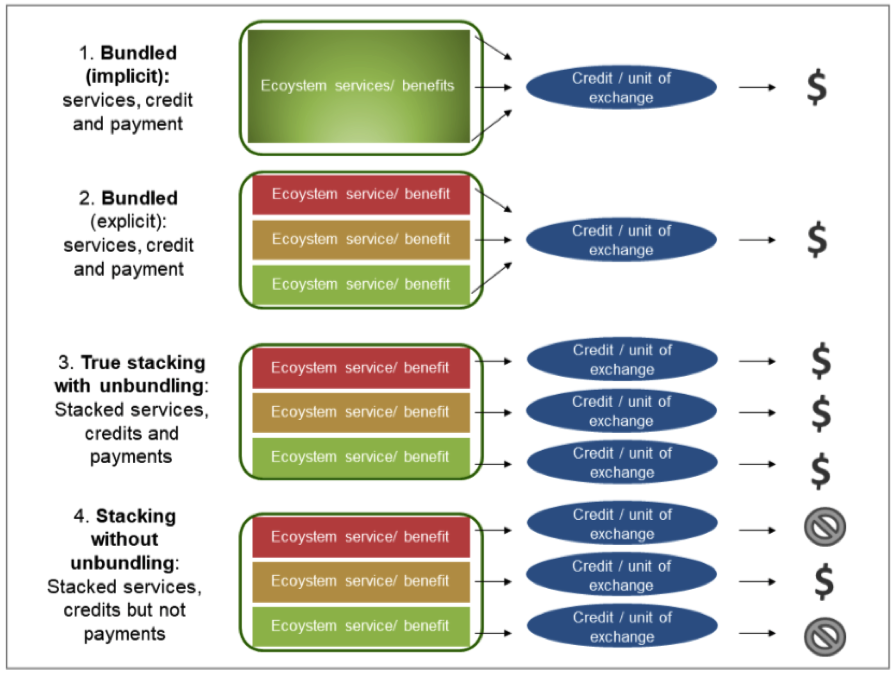This is article 4/5 for the series 'Woodland Carbon Explained'. Originally published in Forestry and Timber News. This blog considers how new ecosystem markets may interact with woodland creation and forest management.
Multi-purpose is a term foresters are familiar with. After all the woodlands they work in are systems - dynamic entities with numerous inputs and outputs - and the role of the forester is to coax that system into delivering a desired blend of outcomes. Trade-offs are made where necessary to reflect the relative importance of financial, social or environmental outcomes, but the woodland overall is always richer for being designed or managed with these multiple objectives in mind.
This same principle holds true when considering the many ecosystem services that a woodland can provide. If created solely for carbon capture, a woodland is likely to be quite densely planted, with high-forest species favoured over pioneers. Conversely, if biodiversity gain is the main objective, the resulting woodland will be more of a habitat mosaic, with dense pockets of scrub in places and flower-rich glades elsewhere providing the floral diversity to support a wide array of species. Co-design for both these outcomes, however, and for an additional ecosystem service such as timber production, and the resulting woodland will be sequestering atmospheric CO2, supporting local wildlife and reducing our reliance on timber imports. In other words, delivering everything a 21st century woodland needs to.
But it only makes sense to afford these ecosystem services equal weighting in our decision-making processes if all of them generate revenue. At the moment, of the three listed above, only carbon capture and timber production will provide land managers with an income. That is set to change, though, as new ecosystem markets come to the fore, and payments start being made for biodiversity gain, nutrient neutrality, natural flood mitigation and more. Woodlands are well positioned to deliver many of these ecosystem services, and that could change the financial drivers for, and expectations of, woodland creation going forward.
Generating payments from multiple ecosystem services in this way is referred to as stacking, and stacked ecosystem services can either be sold bundled or unbundled. The jargon itself isn’t important, it simply highlights that there are different ways to generate income from projects that deliver more than one ecological outcome. This is happening already, with woodland carbon commanding a premium when generated from a project with clear biodiversity or hydrological benefits. In these instances, the latter two ecosystem services are bundled in with the carbon, and the price achieved for the resulting credit often reflects that.
Looking ahead, it isn’t hard to imagine that as more and more payments for ecosystem services come online, land managers will wish to stack as many of them as possible in every project they undertake. But this does present challenges, especially if any of the services are being sold as offsets, each of which will need to prove additionality.
The other great unknown is how these emerging ecosystems markets will interact with new rural subsidy regimes in each of the UK nations. In England, the direction of travel signaled by the Environmental Land Management Scheme (ELMS) makes it likely that public funding will also, increasingly, be targeting delivery of ecosystem services. Intelligent integration with any private markets that are operating will be key, to avoid government money outcompeting private investment in this space.
Regardless of what individual governments do, it seems certain that interest in the broader context of natural capital is going to continue to grow. More and more businesses are beginning to account for their impacts on the natural world, and the recent Dasgupta review will only spur on action to fully internalise environmental costs within our economy.
 A schematic illustrating the different ways ‘Payments for Ecosystem Services’ (PES) can be packaged
A schematic illustrating the different ways ‘Payments for Ecosystem Services’ (PES) can be packaged
Some people instinctively mistrust this move to monetise nature, concerned that if our living systems are given a financial value it opens the door to them being disregarded in favour of more lucrative activities. Others counter that we won’t achieve the scale of investment into the environment that is required unless we can bring natural capital wholesale into our economies.
My personal view is that our societies have already monetised a lot of ecosystem services, from food production to eco-tourism, which lessens the relative importance of those services we don’t pay for, at least economically. By allowing more services to generate income for land managers, we level the playing field and incentivise the creation of systems that are more ecologically productive. That has to be a good thing.
In any case, it will be interesting to see how these ecosystem markets develop and grow. They have the potential to underpin a radically different rural economy, where our land is managed to deliver a whole suite of new commodities. As an industry, forestry is well placed to benefit from this shift and play its part in restoring the natural capital of our country.
/public/694/2e2/b68/6942e2b689131175280316.jpg)
/public/692/dd7/e0c/692dd7e0ca905474952387.jpg)
/public/68f/f39/36d/68ff3936defff352354004.jpg)